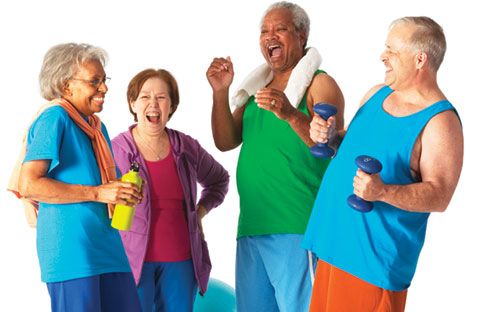As we age, it becomes increasingly important to maintain an active lifestyle. Exercise and physical activity play a vital role in improving and maintaining health, regardless of age. In fact, regular exercise can have a profound impact on the overall well-being of older adults, helping them maintain independence, manage chronic conditions, and enhance their quality of life.
The Benefits of Exercise for Older Adults
Engaging in regular physical activity offers a multitude of benefits to older adults, both physically and mentally. These include:
Improved cardiovascular health: Exercise helps strengthen the heart and improve blood circulation, reducing the risk of heart disease and high blood pressure.
Enhanced bone strength: Weight-bearing exercises, such as walking or weightlifting, can help prevent osteoporosis and maintain bone density.
Improved flexibility and balance: Stretching exercises and activities like yoga can help improve flexibility and balance, reducing the risk of falls and injuries.
Reduced risk of chronic diseases: Regular exercise has been shown to help prevent or manage chronic conditions such as diabetes, arthritis, and certain types of cancer.
Improved cognitive function: Physical activity has been linked to better cognitive function, memory, and reduced risk of cognitive decline and dementia.
Enhanced mental well-being: Exercise releases endorphins, which can help improve mood, reduce stress, anxiety, and symptoms of depression.
Promoted social engagement: Participating in group exercises or physical activities provides an opportunity for social interaction, contributing to overall mental well-being.
Types of Exercises for Older Adults
There are various types of exercises that older adults can engage in to reap the benefits mentioned above:
Aerobic exercises: Walking, swimming, cycling, or dancing are great examples of aerobic exercises that can improve cardiovascular health and stamina.
Strength training: Lifting weights or using resistance bands can help build muscle mass, increase metabolism, and improve bone strength.
Flexibility exercises: Stretching exercises such as yoga or Pilates can improve flexibility, range of motion, and promote relaxation.
Balance exercises: Tai Chi or specific balance exercises can help reduce the risk of falls, enhance stability, and coordination.
Functional exercises: These exercises focus on activities needed for daily living, such as lifting, reaching, or carrying objects.
Important Considerations and Safety Measures
Before starting any exercise regimen, it is essential for older adults to consult with their healthcare provider to ensure the activities chosen are appropriate for their current health condition. Some important considerations and safety measures include:
Start slowly: Begin with low-intensity exercises and gradually increase intensity and duration.
Warm-up and cool down: Prioritize warm-up exercises and stretching to prepare the body for exercise and minimize muscle soreness.
Stay hydrated: Drink plenty of water before, during, and after physical activity, especially on warmer days.
Wear appropriate attire: Choose comfortable, breathable clothing, and supportive shoes to prevent injuries and promote comfort.
Listen to your body: Pay attention to any pain, discomfort, or unusual symptoms during exercise and adjust accordingly.
In conclusion, exercise and physical activity are crucial for maintaining and improving the health of older adults. Whether it’s cardiovascular exercises, strength training, flexibility exercises, balance exercises, or functional exercises, there are numerous options available for seniors to stay active and enjoy the benefits of regular physical activity. By taking into account key considerations and safety measures, older adults can protect themselves from injury and make exercise a fulfilling and enjoyable part of their daily routine.

